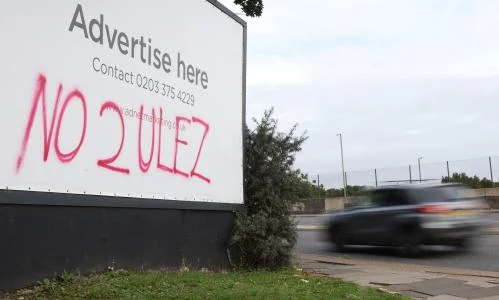
By Phil Burton-Cartledge, The Guardian.
People used to shift rightwards with age. But the Conservatives have destroyed that prospect, and there’s no easy way out
Are the Conservatives a dead party walking? Settling down to a lengthy leadership contest, the contenders for the crown are hoping for a quick bounce back. But first, let’s look at some of the candidates’ diagnoses of the party’s worst defeat in its parliamentary history.
James Cleverly is of the view that his party was rejected because it was lacking discipline and unity. Tom Tugendhat’s pitch supposes that it lost the trust of voters because of failures to get to grips with immigration, and he therefore would be willing to pull Britain out of the European convention on human rights. Announcing her candidacy, Priti Patel said it was “time to put unity before personal vendetta, country before party and delivery before self-interest”.
None of these solutions would address the deeper, existential crisis their party faces: the grim reaper is coming for their voters. A provisional review of where 2019’s votes went found that 1.4 million Tory voters had died. The number of Labour voters who died during the same period was 400,000, but unlike the Tories, Labour voters keep renewing themselves as more young people come of voting age.
The Times estimates that by 2029, 1.2 million people who voted Tory last month will have died; that number for Labour is 500,000. According to these figures, Labour’s voters will be more than replaced by 800,000 new younger voters. Only 160,000 of those who come of age by 2029 are projected to vote Conservative. This suggests the party is literally dying.
Or is it? Politics is not static. As older people depart, they should be replaced by the generation after them as they age. But thanks to the Conservatives’ policies, the party can count on fewer people shifting to the right as they grow older. The two chief props that once encouraged this shift – family life and home ownership – have been kicked away.
Since 2010, by accident and design, new builds of private and social housing have lagged far behind demand. This has helped to fuel asset price inflation, drive up property prices and make renting a landlord’s market. Millions of working-age people have been locked out of home ownership or have only been able to ascend to the bottom rung of the housing ladder later in life than their parents and grandparents, delaying or preventing millions of younger people from starting a family.
Can this be fixed by building more houses? It won’t be as easy as that. There are two more problems confronting the Tories. The first has been their record in office. In the past four years, the Tories have held wages down during an inflation crisis, defunded the state, piled debt on to graduates, offered scant, low-paid “opportunities” through their apprenticeship schemes, and have made it clear that mitigating the climate emergency is a luxury Britain can ill afford. They have done nothing for working-age people except make their lives harder, which suggests hope of a quick return to office is dependent on an outbreak of mass amnesia.
The second difficulty has been the massive upheaval in values held by working-age people. Britain is one of the most socially liberal countries in Europe and is becoming even more so. The supplanting of social conservatism by social liberalism is not because of lefty teachers or lecturers. It is because of a fundamental shift in the nature of work.
Rather than working in factories or on production lines, people are now more likely to work in retail, hospitality or a call centre; to become a teacher, a marketing professional, a criminal lawyer or a social media influencer. In 1970, out of 25.3 million working people 15.4 million were employed in the service sector, accounting for 56% of the economy. In 2024, that same sector is responsible for 81% of output and 82% of employment. All of these jobs deal with knowledge, services, care and relationships.
This has had a profound impact on what work is, shaping the outlooks of millions of people. These careers select people for skills such as their ability to socialise and network, and above all, their tolerance of other people’s differences. This has two immediate consequences for the Tories.
First, it means that their reliance on scapegoating – be it asylum seekers or transgender people – has less purchase among younger voters and can only yield diminishing returns as time goes by. Second, attacking “wokeness” is in effect declaring war on the common sense of most working-age people. The more the Tories pursue a strategy based on these two things, the greater the distance they put between themselves and the younger voters they need to win over.
The Tory crisis is much more profound than any of its leading figures realise. The party has alienated working-age voters, but any serious attempts to address that demographic’s concerns risk alienating its coalition of older, propertied voters who have stuck with it out of a mix of stubborn loyalty, fear of younger people and what they represent, and incentives such as the triple lock on pensions and winter fuel allowance payments.
Meanwhile, abandoning social conservative positions on issues such as immigration and trans rights might play well with the voters of tomorrow, but it threatens to cede a chunk of the Tory base to Reform UK. The Conservatives already lost 25% of their 2019 votes to Farage’s party on 4 July, and they will be reluctant to lose more.
There is no easy way out, nor is there much of an acknowledgment of the true depth of the hole the party is in. As such, whoever wins the Tory leadership won’t preside over a renaissance. Merely more decline and fall.





